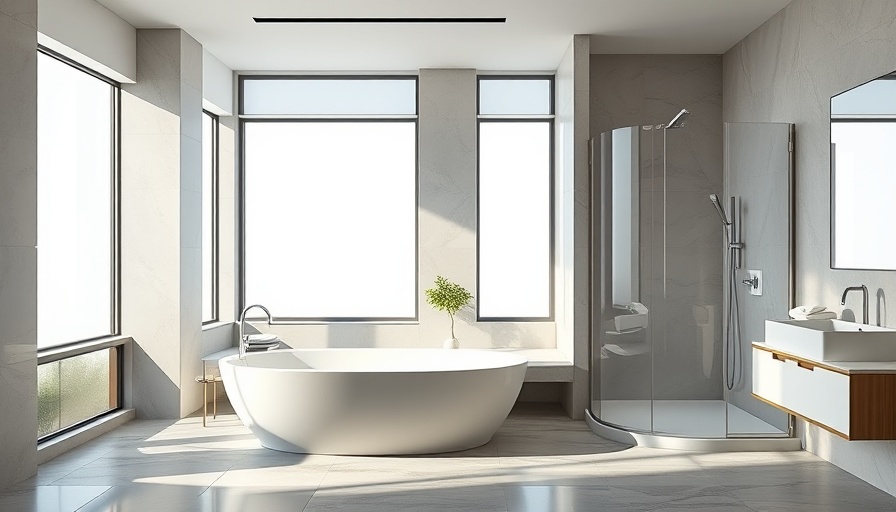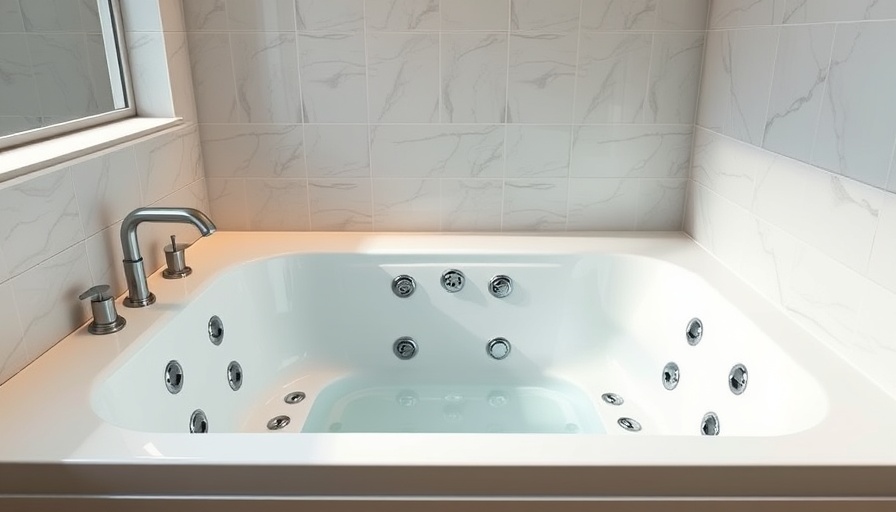
Choosing Between Walk-in Tubs and Roll-in Showers: A Detailed Look
As safety and style continue to influence the decisions of homeowners, particularly those aged 55 and older living in Ocean County, the choice between walk-in tubs and roll-in showers becomes increasingly significant. Each option presents its own set of advantages and disadvantages, particularly in the context of accessibility, aesthetics, and safety. The importance of creating a safe bathing environment cannot be overstated, especially for those with mobility challenges or aging family members.
Understanding the Safety Features
When it comes to safety, the features of walk-in tubs make them a strong contender for many households. These tubs often include built-in features such as grab bars, slip-resistant flooring, and low thresholds, making them safer for individuals wanting to soak and relax without worrying about falls. For Ocean County residents seeking both a luxurious bathing experience and safety, walk-in tubs provide a complete soaking experience that minimizes the risk of slipping due to their closed design.
Contrarily, roll-in showers offer seamless access for those in wheelchairs or with severe mobility issues. The absence of any threshold provides an accessible entry that minimizes fall risks. Roll-in showers frequently come with grab bars, removable showerheads, and seating options, significantly enhancing user comfort and control. For caregivers, the open design of roll-in showers facilitates easy monitoring, making it a practical choice for families looking to ensure safety for their loved ones.
Financial Considerations: Buying Decisions Made in Perspective
Cost is a critical factor in the decision-making process. Homeowners in Ocean County should consider the initial purchase price, installation costs, and long-term maintenance when weighing the options between walk-in tubs and roll-in showers. Generally, walk-in tubs have a higher upfront cost, ranging from $4,000 to $12,000. This high cost stems from their complex design and features like whirlpool jets or heating elements, which enhance relaxation.
Roll-in showers tend to be more budget-friendly options, costing less in both initial purchase and installation. This factor could make them appealing for homeowners who need to adhere to a tighter budget while still ensuring functional safety in their bathroom.
Aesthetic Appeal: Style Meets Functionality
Another important aspect to consider in the walk-in tub versus roll-in shower debate is aesthetics. For homeowners who perceive the bathroom as a personal sanctuary, it’s crucial to pick stylish fixtures that match their home’s design. Walk-in tubs come in various materials and styles, allowing homeowners to select a design that complements their space, potentially adding value to their properties.
On the other hand, roll-in showers offer a minimalist appeal, which could align well with contemporary designs. Their open structure can create an illusion of space—an advantage for smaller bathrooms. Additionally, the customization possibilities in terms of tiles, fixtures, and styles can result in a stylish solution that feels modern and inviting.
Future Trends in Bathroom Design: Meeting the Needs of Aging Homeowners
Looking ahead, the demand for accessible bathroom solutions like walk-in tubs and roll-in showers is likely to grow as the population ages. There will be a push for designs that meld safety and style more seamlessly, allowing homeowners to choose products that enhance their comfort without compromising aesthetics. Additionally, emerging technologies could introduce features such as touch control water temperature settings and automated cleaning systems, making these options even more appealing.
Making the Right Decision for Your Home and Lifestyle
Ultimately, the decision between a walk-in tub and a roll-in shower should center on personal needs and lifestyle. Considerations like accessibility, budget, aesthetic appeal, and safety features should weigh heavily in your choice. Sifting through these various factors can be overwhelming, but understanding the pros and cons can direct you toward a fulfilling decision.
As you contemplate your options, seek the insight of professionals in the industry and consider visiting showrooms to experience the fixtures first-hand. By taking the time to evaluate the implications of each option, you position yourself to make a thoughtful choice that significantly upgrades your bathing experience and contributes positively to your lifestyle.
Your Safety and Comfort Matter
Whether opting for a walk-in tub or a roll-in shower, ensuring your comfort and safety is paramount. Start planning your bathroom upgrade today by consulting experts in bathroom design and installation. Both options present unique benefits; ensure that you choose what truly meets your needs while enhancing your daily routine.
 Add Row
Add Row  Add
Add 




Write A Comment